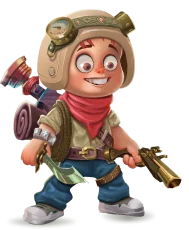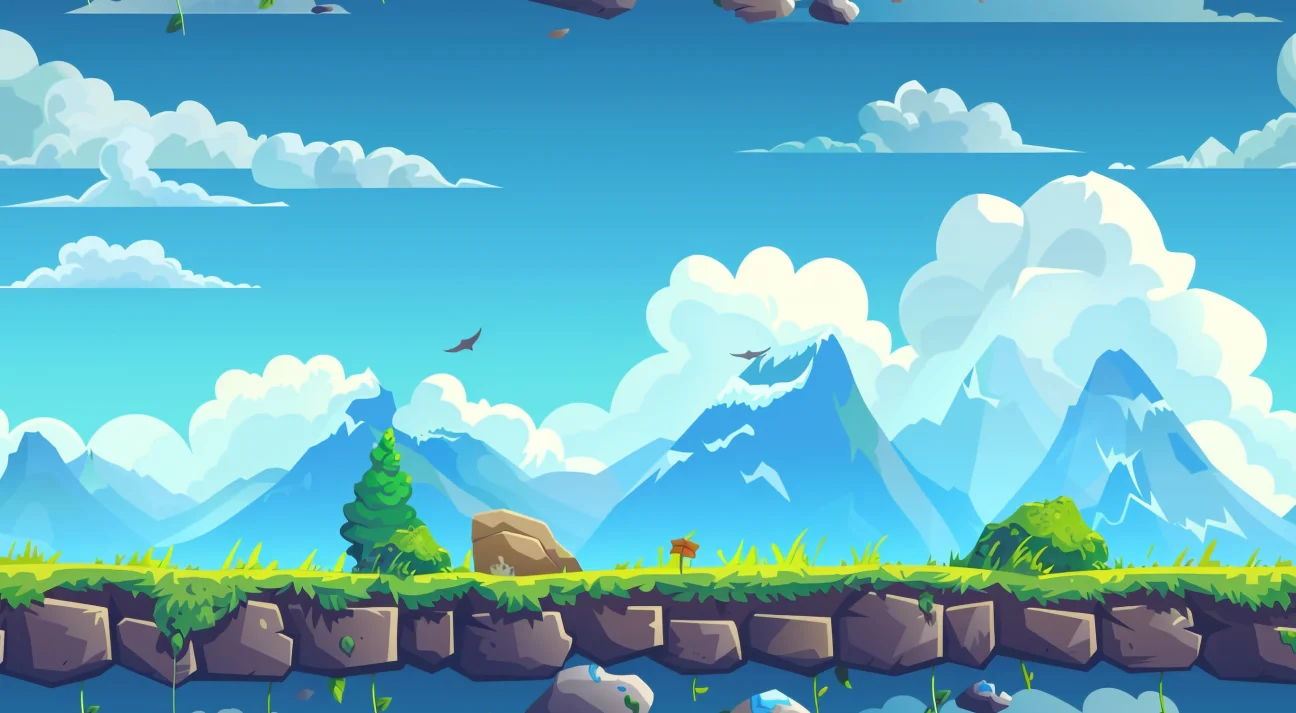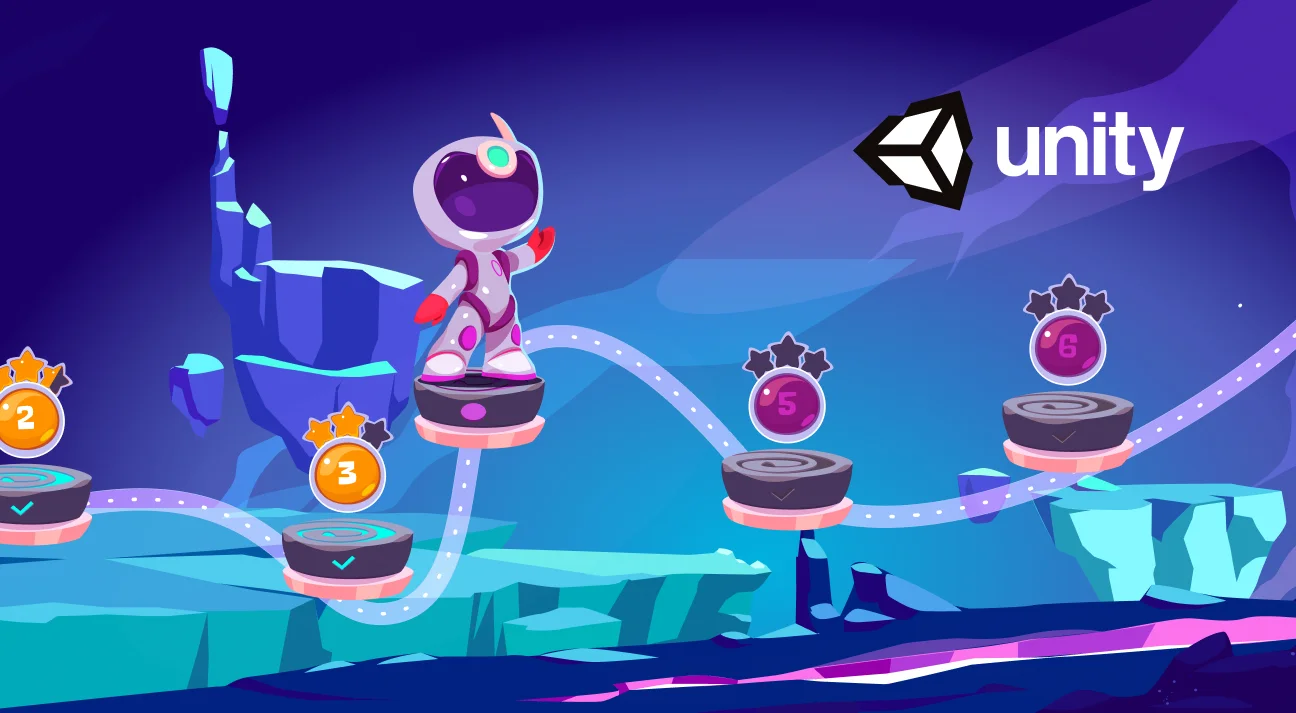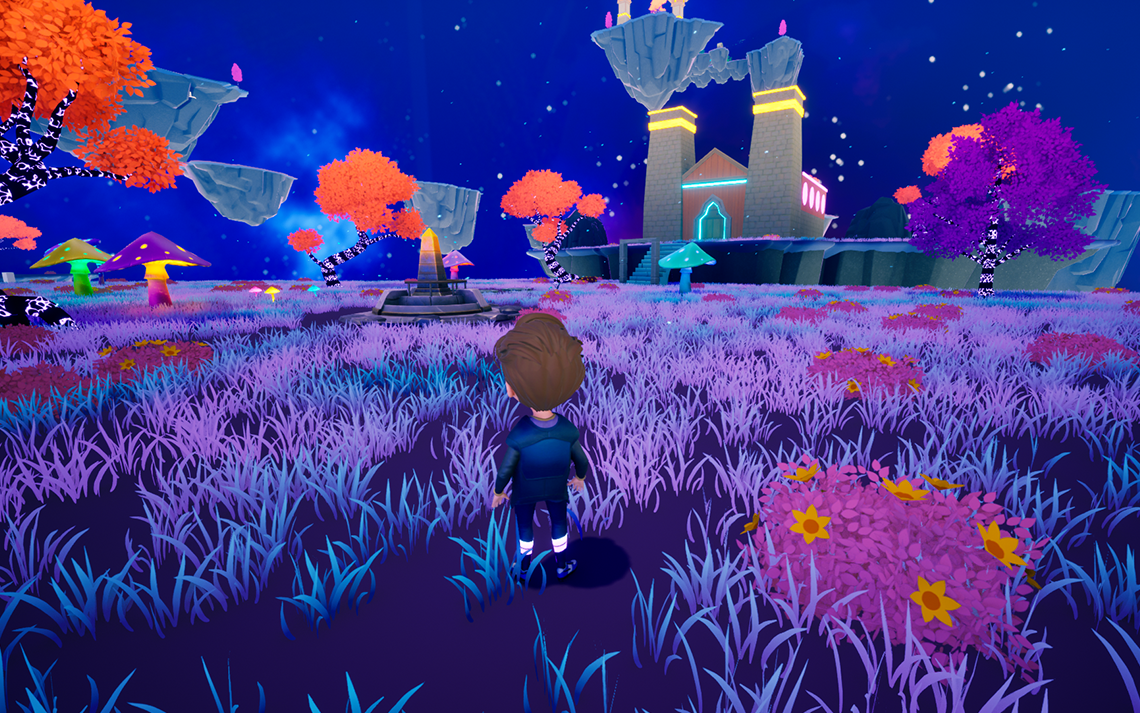
How to Effectively Use Storytelling in Video Games?
There’s always a STORY to remember and share! Whether it is a movie, show, or a video game – what makes them memorable is their story.
So, which was the game that you played a long time ago – and you still can’t get over it? And what was the element of that game that compelled you to remember it? It must be the storytelling of that video game and its gameplay.
Let’s put a spotlight on Video Game Storytelling, as it is today’s topic of conversation! So, if you’re creating a big-bang video game, it’s a must to have a storyline and narration that has the power to compel players to play and play until they finish it off.
But how to create such an engaging and compelling video game storyline, and what factors to consider?
Well, this blog is all about that and is at your disposal to work up your mind to create a mind-blowing story concept for your dream game.
- What is Storytelling in Video Games?
- The Evolution of Storytelling/Narratives of Video Games
- What are the Different Types of Video Game Storytelling?
- Why are Storylines Important in Video Games?
- What Elements Contribute to A Captivating Game Story?
- How do you Make a Game Storyline?
- Game Storytelling Best Practices
- What Kind of Talents to Hire for the Preparation of Video Game Storytelling?
- How Can 300Mind Gaming Studio Help You with Game Storytelling?
- FAQs on Game Storytelling
What is Storytelling in Video Games?
Storytelling in video games is conveyed through two main components: its Story and Narrative (also referred to as Narration), followed by the gameplay.
The story of video games revolves around the game world and its central character – the Protagonist, who possesses the power to achieve remarkable feats in the game and the Antagonist – challenging the protagonist. It should be well-crafted to immerse players completely in the narrative. However, this is only the first part.
The other aspect should provide information about how the story is presented in the video game, allowing players to grasp the essence of the narrative and respond accordingly. This process is known as story narration. It can be accomplished by portraying scenarios where the protagonist interacts with other characters, encounters challenges, and prompts players to act in ways that either rescue them or aid in accomplishing their mission.
Video game storytelling differs significantly from storytelling in movies, books, and shows. It can be explicit or implicit, depending on the game’s concept. When employing cutscenes, dialogues, and textual representation, video game storytelling is considered explicit.
In implicit video game storytelling, the game scenarios, world design, levels, and non-player characters are utilized to convey the storyline. In essence, video game storytelling constitutes the part of gameplay that initiates and advances the action while capturing the player’s attention.
Okay, so this is the storytelling in video games. But what about its evolution? Well, the next section is all about that!
The Evolution of Storytelling/Narratives of Video Games
In the early era (1970s – 1980s), video games were first designed with a motive to have and share “fun.” Because initially developing video games was technically challenging, getting them to play meant a lot more than worrying about the story. So, games like “Pong” were more focused on gameplay mechanics than narratives.
After this, the next decade (1980s – 1990s) was all about text-based adventures. It introduced players to the games carrying an immersive storytelling, presenting it in the simple overlayed texts. “Zork” and “The Hitchhiker’s Guide to the Galaxy” were great examples of such games with text-based storytelling, laying the foundation for what would later be considered some of the best story video games.
Along with that, this decade also witnessed quite great progress with the technology, providing bandwidth of 8-bit and 16-bit memory processing. Utilizing this advancement, games like “Final Fantasy” and “The Legend of Zelda” were introduced with more evolved storytelling with simple dialogues and text-based exposition.
The next decade (1990s – 2000s) was about CD-ROM support, which gave video games a bit more coverage to focus more on creative game narratives. In this, games like “Final Fantasy VII” and “Metal Gear Solid” introduced the use of full-motion video (FMV), voice acting, and cutscenes to support more complex narratives.
The beginning of the 21st century came with a bang and introduced 3D graphics and open worlds. And with that, the branching video game narrative types came into existence, with games like “Half-Life” and “Mass Effect” enabling players to choose their liking of game actions and get impacted outcomes.
The 2010s-2020s era saw a rise of strong narrative-driven games like “The Uncharted Series, The Walking Dead, and many others,” offering players interactive storytelling. Also, the emergence of AR/VR gaming made this game narrative even more immersive and engaging, taking the gaming to a more personal level with games like “Moss” and “Half-life: Alyx.”
Finally, the ongoing era is taking the game narratives to the non-linear and dynamic levels with games like “Cyberpunk 2077,” enabling players to take the story progress based on their choices from the beginning.
What are the Different Types of Video Game Storytelling?
When you first start exploring the game narrative, you’ll come across two parts: The structure – pointing towards the story progress, the subparts of the story, the connection; and The Portrayal – How the game represents the story. Keeping the different presentations of both parts, here are the types of game storytelling:
Linear Storytelling
It is a traditional game storytelling technique, yet relevant today! It follows a predetermined sequence of the story the way it should be, with the perfect beginning followed by the mid-scenario and the climax. A story navigating from one part to another in a serial order. So no backtracking, divergence, or breaking of the series.
Linear Storytelling is really effective and good but takes away the player’s freedom sometimes to explore and try different things in the game.

Here, “⬜” represents the beginning, “⎯” represents the gameplay, “◯” – story event, and “▲” – Ending.
This type of storytelling is tightly scripted with a set sequence of events that players have to follow to advance through the story. Moreover, players’ actions don’t impact the storytelling of the game.
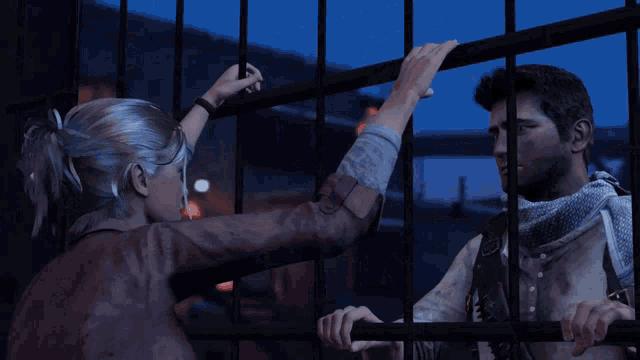
Popular games, like The Uncharted 4, Red Dead Redemption 2, Total Overdose, use linear story structure, where events are started with small impacts and then build up to the climax. It is straightforward and enjoyable at the same time as you see the story unfold in a way you understand.
PEARL Model of Storytelling
It’s also known as a String of Pearls. It’s mostly the linear type of storytelling until the player’s freedom to make choices diverts the story into a different possible ending. It is also known as FIVE ACT Storytelling, following Prologue, Escalation, Audience, Resolution, and Legacy.

This type of storytelling is mostly used for Role-Playing Games (RPG) with linear storylines with partially loosely coupled sequences for missions and quests.
Though offering players to make choices to progress the game, like choosing different missions or quests, the command of the story still remains in the hands of game creators.
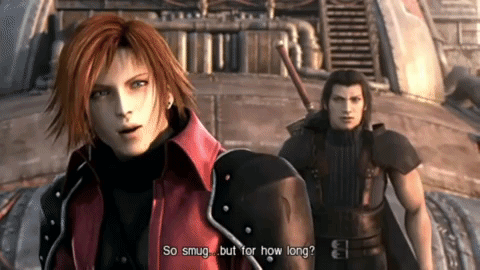
Popular games, like Final Fantasy, The Legend of Zelda: Ocarina of Time, Uncharted 2: Among Thieves, and Mass Effect Series follow this Pearl model of storytelling.
Branching Storytelling
It’s a bit of a complicated type of game narrative that revolves around the choices players make.
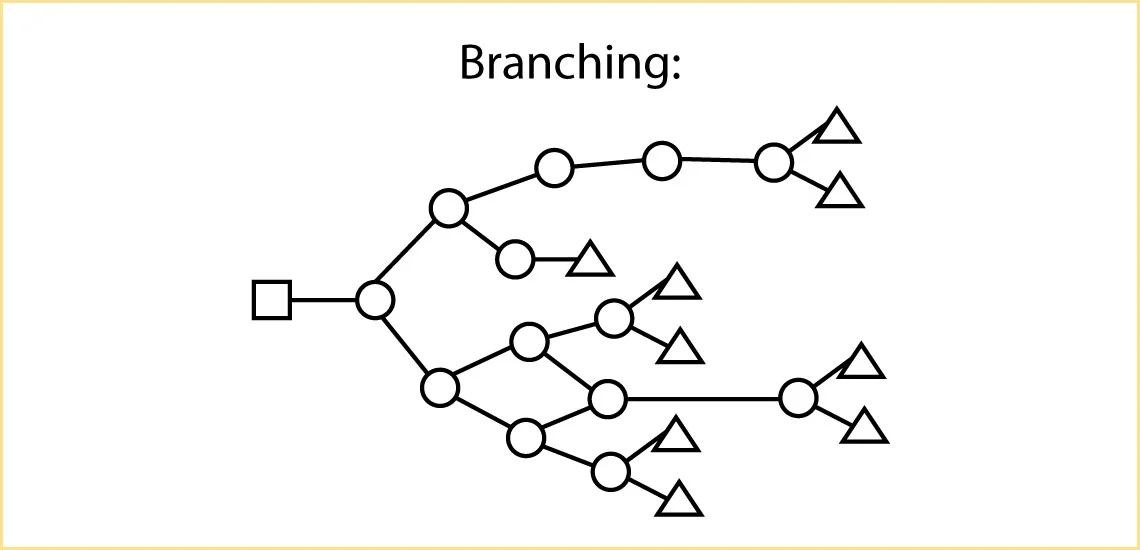
Unlike the string of pearls narrative, the branching type has more chain reactions based on the choices players make while playing the game. So, in this type, a game can end in many possible ways.
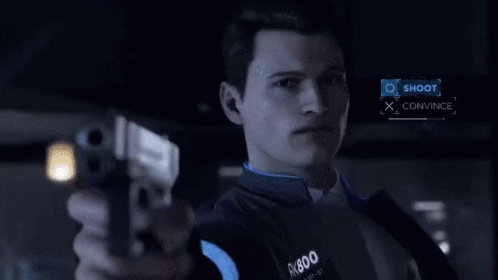
Popular games like Detroit: Become Human, Deus Ex: Human Revolution, Life Is Strange, and others are created using the branching type of storytelling.
The Amusement Park
With more likeness to the branching model but the slightest and powerful difference, the amusement park game narrative technique is extensively used by open-world games. It lets players control the storyline with interactions with the non-player characters rather than making choices for the side quests.
Popular games like Assassin’s Creed and The Elder Scrolls V: Skyrim follow the amusement park narrative model.
Non-linear Storytelling
It’s more like loosely coupled storytelling, in which players have more agency and freedom to play and explore the game as per their pace. This type of dynamic storytelling can make the gameplay more interesting as players have total control over mechanics, physics, and other dynamic elements to ascend in the game.
In this game, players uncover hidden stories and quests that add interesting elements and complexities to the game’s narratives. These game stories immerse players more organically into the experience, particularly in open-ended scenarios, due to the self-discovery element they introduce.
Popular games, like The Witcher 1 and 2, Injustice 2, Fallout series, and Dragon Age series, also use a non-linear narrative technique.
WOW! So, the storytelling for a video game can differ in this manner! Quite insightful! 💡 But what about the benefits? The next section is all about that!
Why are Storylines Important in Video Games?
As per our extensive research, we find that the majority of players find games interesting due to their good storytelling and top-notch graphics and performance. However, to know more about the importance of having great storytelling for your dream video game, let’s have a look at the following benefits:
Enhanced Immersion and Engagement
Game storytelling takes a unique approach to entertainment while creating captivating storyline hooks that trigger players’ emotions (empathy, excitement, etc.) and curiosity.
This curiosity immerses them in the game narratives and makes them think of many possibilities to take the story forward.
Motivation to Come Back to Take A Step Forward
Adding great storytelling with a hook develops the curiosity and attention of players. Most of the time even acts as a motivation factor for them to stay connected with the game as an anchor.
Hence, games with captivating storytelling have more potential to motivate players to play and play until they find the perfect ending. Speaking of which, games with non-linear storylines contain more motivation for players to get the ending as they want to have.
Better Game Promotion Opportunities
As your game has more dynamic and captivating storytelling, you have more data to prepare for the marketing materials for its promotions. Not just that, games with catchy storylines also get more ratings and reviews and chances of word-of-mouth marketing.
Helps Players to Become Better Decision-maker
Video game storytelling/narrative is highly based on the concept of curiosity, which makes players think critically. During this, players may feel motivated to think, “What will happen if I take this step forward?”
So when playing the game, with curiosity, they also combine mechanisms and techniques to try out each and every possibility and utilize their critical thinking to make decisions for the actions to clear the level and eventually win the game.
Build and Expand the Community & Social Connections
If the games are amusing and have a captivating storyline with robust performance and gaming experience, like PUBG, Uncharted, and other games, such have a dedicated players’ community discussing gameplay and a lot more. They mostly create communities using Discord as their friendly tool to talk about games and stream while playing them.
This way, you can create and motivate players to create a community of gamers, as we have for our 300Mind Gamers’ Community In Discord, where we share gaming secrets with our dedicated audience.
It increases the chances of getting it more popular, promotion, and players’ investment in the gameplay. All of these lead to the potential and motivation for you to create the sequence for your game storyline.
What Elements Contribute to A Captivating Game Story?
A storyline and its narrative are what make your game compelling to the players and make them immersed in the game world throughout their gameplay experience. But along with the design and storytelling, there are involved elements that make your game more compelling and attention-worthy. So, let’s have a look at those elements contributing to the enhancement of the game narratives:
Theme and Message
Each and every story, whether it is of a movie or a game, it’s all groundless without its theme and message. Okay, having a theme in your video game storytelling is a must, but it’s okay if your story doesn’t have a social message. Because some are meant for entertainment purposes only. However, a game storyline with a clear theme and message can have a benefit over its impact.
Clear Conflict
It is the core element of the game storyline that ensures your game storyline and narratives go forward and create clear challenges, making the game interesting to play. Games with obvious conflicts captivate players to play them often until they overcome them and finish the game with a victory.
Pace and Consistency
These are the two critical elements of your storytelling that decide the effectiveness of your game story and its narrative. So, the balance between the game narrative shifts, exploration, actions, and their sequence helps to maintain the pace and continuity of your game storyline and make it sound captivating.
Game Characters
Characters are the ones we call protagonists, antagonists, and supportive roles, and the game story revolves around them. But most of the time, the player plays the game from the protagonists’ viewpoints. So, their avatar, strengths, limitations, life story, and actions are the ones that help them to be in the gameplay and take the story forward. However, their impact on the game story differs as per the game storytelling types and roles/characteristics given to the characters.
Dialogues
When we talk about storytelling, we think about the dialogues and screenplay it can cover as we hear its concept. Though games are for entertainment purposes only, giving a bit of time to their narration with animated screenplays can add an interesting experience to it.
Controls
The game storyline is great, and the characters you designed are also mind-blowing, but all the efforts can go to waste if the players can’t interact properly in the gameplay. Controls are the ones that help players show their moves and make the game interesting. So, in this part, the game’s storytelling and gameplay go hand-in-hand.
Oh, okay!! So, that’s the whole thing! But what about the processes to follow to structure the game storytelling, balance it, and portray it in an interesting way? Let’s move to the next part, to know all of these.
How do you Make a Game Storyline?
The most important, interesting, fun, and yet mind-bursting session, in which we have to try all possibilities to make our game storyline attention-worthy and compelling to play. So, let’s take a look at a step-by-step process to structure a game storyline:
Ideation, Research, and Analysis
There was an idea about the game, your dream, that compelled you to work on that and bring it to life. So, this stage is all about clarifying the main idea and your game concept, possibilities you can plan, finding other similar kinds of games, and learning how they have planned their storyline and narrations.
This research and analysis will help you gather insights and do initial planning for your game story. Using this, you can identify the core elements of your game, including genre, theme, central conflict, main character, motivation, and overarching games – all those making the game that anyone wants to play and win.
Act Breakdown
Based on the game storytelling type you choose, the act breakdown is decided. This planning involves how the stories make the turn and how the narration will be forwarded. Apart from that, games with lengthy and complex storylines have these acts breakdowns.
So, if your game has such a lengthy story with twists and turns and expansion, you should divide the story into acts or chapters. It also increases the chances of the game sequels.
But make sure that each act has a significant turning point in the narrative with challenges that feel obvious.
Outline the Game Storyline
Not just in games but also in literature, this is the most effective practice when getting started with story writing. It highly depends on the type of story narrative you want to focus on while considering the major plot points you want your character to experience. So, you can start with outlining:
- Events for the game characters
- Game-ending possibilities based on the players’ action choices
As a part of considerations, it’s advisable to be detailed and specific with your outline and ways the story takes place and make turns to avoid confusion later on.
For better details and a quick view of the story, you can create a flowchart of actions and how the major storyline flows as per the action.

This will not only help you better understand the story but also the other viewers analyzing your plot. Doing so will help you quickly review it later on when planning to create the game storyboarding and the sequel of the story to make your linear storyline go on.
Writing an Introduction to the Story (Act-1)
Now, this is the part, in which you introduce the game story with its main characters and their world. Here, in the world creation, you should develop the backstory created around a fictional universe, the type of culture it follows, and settings (time, location, etc.).
You should write the story introduction in a way that helps players understand the type of story it is and get a little bit of a hint on how it will take place later in the game.
Defining Characters and Goals
When writing the story, there are always three actors we should keep in mind – The Main Character (The Protagonist), The Villain or the challenger in the story (The Antagonist), and the one who helps the protagonist (A Companion Character).
So, when designing characters, we should keep in mind clearly their values, relationships with other characters, their decision-making abilities, and behaviors based on the given narrative choice. It should also add the goal of the character and the story; just the way, in the Mass Effect game, Commander Shepard goes on a quest to prevent the reemergence of an ancient race known as the Reapers.
Inciting Incident and the Rising Action (Act-2)
The core element, the conflict in the game, is the reason why that story exists and creates a captivating effect. It’s the one that disrupts the buttery lifestyle of the protagonist and challenges them to test their skills and get back to their normal life. You can also call this part the event, marking the central journey.
Midpoint
We also know this point as the intermission in the story. From this point, the story takes the turning point and makes it even more interesting to play the game due to added complexities and alliances. Also, this event takes the story closer to the climax, the final action. So, you need to plan this mid-event strategically to ensure its hook and add enhancement to the story’s interest points.
Climax (Act-2-sub)
This is a thrilling, electrifying event – everyone’s waiting to harness their seat belt tightly as it could misbalance their excitement level. It’s the event in which the protagonist and antagonist come face to face for the final showdown to win their mission. During this event, the protagonist reflects on their journey, deals with the aftermath, and prepares for the final confrontation.
As the introduction creates a hook for the audience and the mid-story ensures their continuous attention to the game, the climax writing should contain a more powerful plot for the player to lose their calm and play vigorously.
Closure to the Main Conflict – The Resolution
It’s the climax plot, where the protagonists act and tie loose ends, creating a vulnerable situation that makes it almost impossible for them to win. Here’s where the final twist is located, using which the protagonist uses their skills, smartness, and heroic moves to win the battle.
And what could be that is what the player has to figure out using their calculations and full attention to the details of the storyline.
It should be written in a way that satisfies the players about the victory. It also gives them an overview of what happens to the character after the main event, some cut scenes with a detailed view from the given storyline, or the emergence of another villain or alliance of antagonists post-defeat – if you want your game to become a series.
Pay Attention to Details
This is the most important step, where you have to proofread your game story and ensure that you’re not missing out on something. If you want to opt for the non-linear storyline, you may want to prepare all the possible alternatives a gameplay goes through based on the choices made by the players.
In the game story, you should add characters with dialogues as per their role and non-player characters, giving hints to the players about what to do next. With these, it should also have a backstory about every important character and element represented in the story to justify their role and what makes them what they are in the story.
Okay, so this is how the video game storylining is done! But what about some best practices or special considerations? So, read further to know that.
Game Storytelling Best Practices
As you know the steps to create a game story in sequential order, it’s also important to keep best practices in mind to craft a mindblowing story. So, here’s what you need to consider:
Player-Centric Approach
When creating a game storyline, it’s really important to keep the effectiveness of the story in mind throughout. But with that, you should also keep the player’s gaming experience in mind. The story you design for the game should also ask for the player’s selection, including their interaction with the storyline, and much more to make your game storytelling an interactive and engaging experience.
Clear Goals and Motivations
With the storyline creation and adding its hook, you have to ensure the intactness of its motive and goals. No matter how many twists and turns you add to the story for the protagonist, their end goal and motivations should remain the same. So players don’t feel distracted and end up confusing themselves, like which action to perform next and where to take the game.
Catchy and Captivating Introduction
The introduction and conclusion both are important parts of the story or any literature, whether it is being written for the book, movie/show, or game. The start and end points should be catchy, intriguing, obvious, and satisfying for the players. It should create curiosity in the player’s mind to explore the game world further.
Show, Don’t Tell
After the story is written, at the time of portrayal, it should show the storyline going with overlaid dialogues, actions, and visuals rather than its expositions with just someone telling the story.
Maintain Consistency
Consistency is the key to many concepts, and the same applies to game storytelling as well. It’s the key that helps you keep the players captivated throughout the gameplay.
Balancing the Pace
In the realm of game story narration, achieving a balance between pacing and narrative progression becomes an essential aspect of crafting an engaging player experience. The interplay between pacing and story turns is a dynamic force that can significantly influence players’ immersion and curiosity, emotional investment, and overall enjoyment of the gameplay.
Foreshadowing
In the games, foreshadowing means indicating to players the hint while narrating the game story and giving hints to the players to know what that representation is about, how to check a particular setup, what to do next, and how to do it.
It is the building block in the game storytelling that helps to smoothly onboard players and help them play like PROs.
Be Careful when Adding Story Twists
A game story with many plot twists makes a challenging impression on players, giving them more motivation to play it to win it. But when adding such difficulties and story twists, ensure that the storyteller doesn’t fall into that trap and end up confusing the story. To avoid that, outlining the story with clear differences may help you to be on track.
External Feedback Over Personal Instincts
As a storyteller, having confidence in the crafted game story is an appreciation point, but to be more sure, it’s important to have it proofread by others who know the game’s storytelling. It helps you get external feedback on the effectiveness of the story and what could be done to improve it.
By following these best practices, you can craft an amazing, exciting game story that is interesting to watch and to be a part of.
What Kind of Talents to Hire for the Preparation of Video Game Storytelling?
As the word storytelling says about having more work to be done, it can’t be done alone. Creating captive and immersive game storytelling experiences involves a collaborative effort from a diverse team of talented individuals. So, when doing so, you should form a team of:
- Game Writers or Narrative Designers who are well-versed in crafting storylines, concept art, characters, dialogues, and overall narrative structure with storyboarding.
- Game Designers who can work closely with game narrative artists to design missions, quests, and interactions, enhancing the narrative experience.
- Game World and Level Designers who are responsible for creating game environments, landscapes, and settings as per the storyline.
- 2D/3D Character Artists who creatively craft characters meeting the game storyline.
- Game Concept Artists are the minds behind the visuals that can be portrayed in the game world as written by the writer.
- Game UI/UX Designers who adjust the game screen designs, such as game menus, HUDs, and user interaction supports, enhance the game narrative experiences.
- Game Animators are the ones adding special visual effects to the game, making the story narrative experience an amusing one.
- Creative Game Directors are the leading minds who interact and guide the entire team to create the game story and narratives visually that are perfectly aligned with the gameplay and mechanics.
Apart from that, you can also hire game cinematic directors and project managers to make your game the type of experience you have once conceptualized.
How Can 300Mind Gaming Studio Help You with Game Storytelling?
Game storytelling is at the core of deciding whether it will be an interesting one that motivates us to complete it or just another game that we play to kill boredom. Hence, it should be crafted carefully by considering all the points that we have mentioned in this blog. For this, you do require help from professionals who have created interesting games like ROFL and Forbidden Islands with amazing storytelling.
At 300Mind, we have a dedicated team of game artists with extensive industry experience, all working in harmony, who can help you with your game development from ideation to storyboarding to design and development with quality assurance. Got an amazing game idea? Share with us, and let’s craft it together!
FAQs on Game Storytelling
Storytelling and storyboarding are related concepts and also sound quite similar, but they refer to different aspects. Storytelling is the art of conveying a narrative with spoken or written words that also includes the structure of characters, events, conflicts, and resolutions. On the other hand, storyboarding is a visual tool that focuses on the visual representation and layout of scenes to guide the production process.
It’s quite a clear difference. In movies, the viewers don’t have the control of changing the storyline, whereas, in video game narratives, players have the freedom to make choices and change the storyline based on their actions. Therefore, storytelling in video games is more dynamic in nature and provides an engaging medium to the players.
